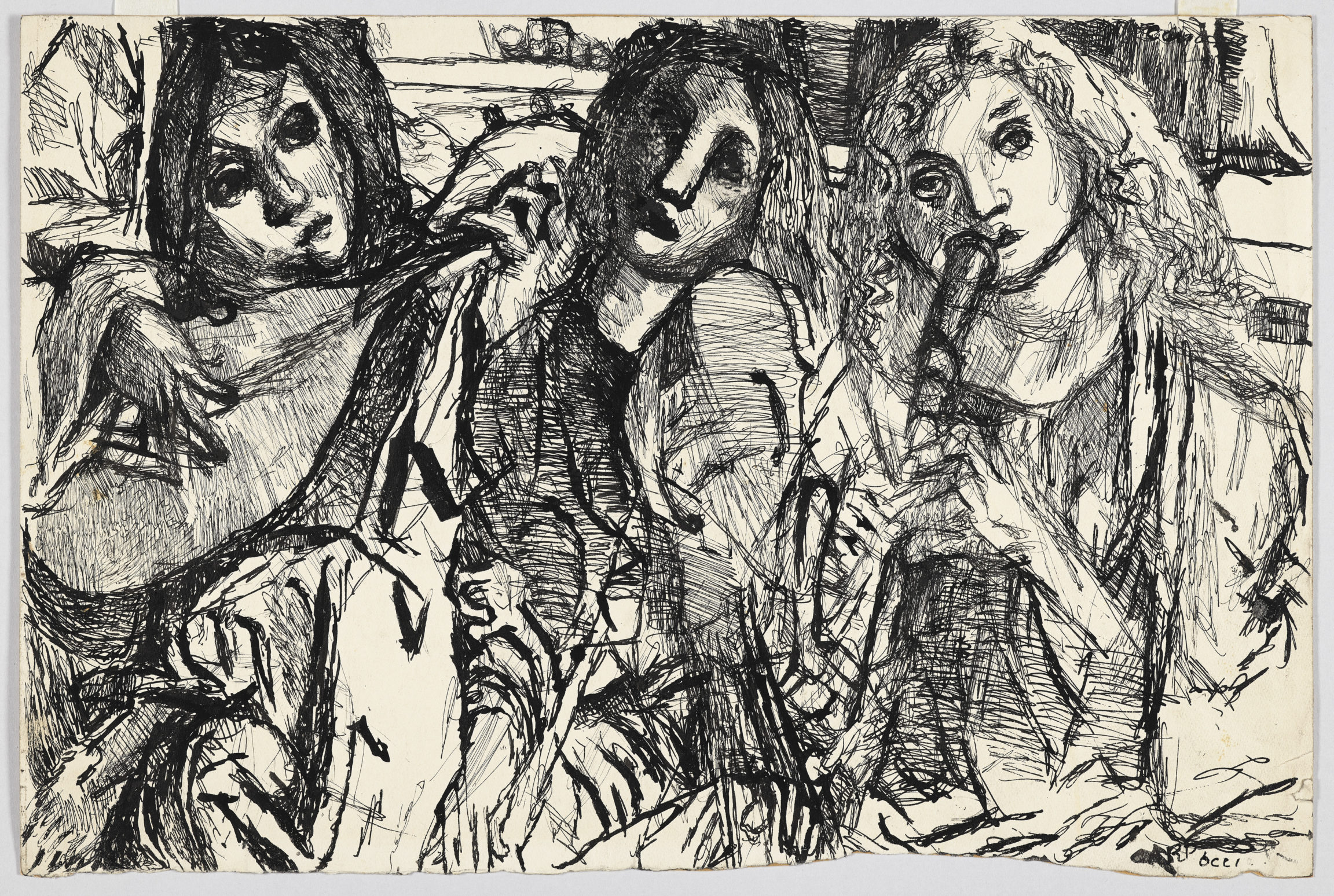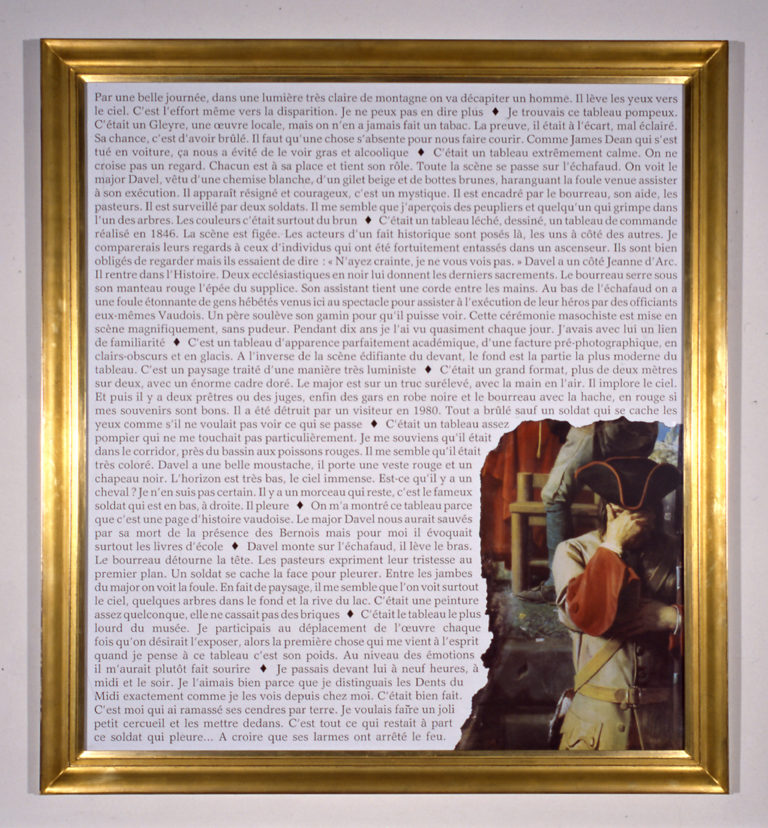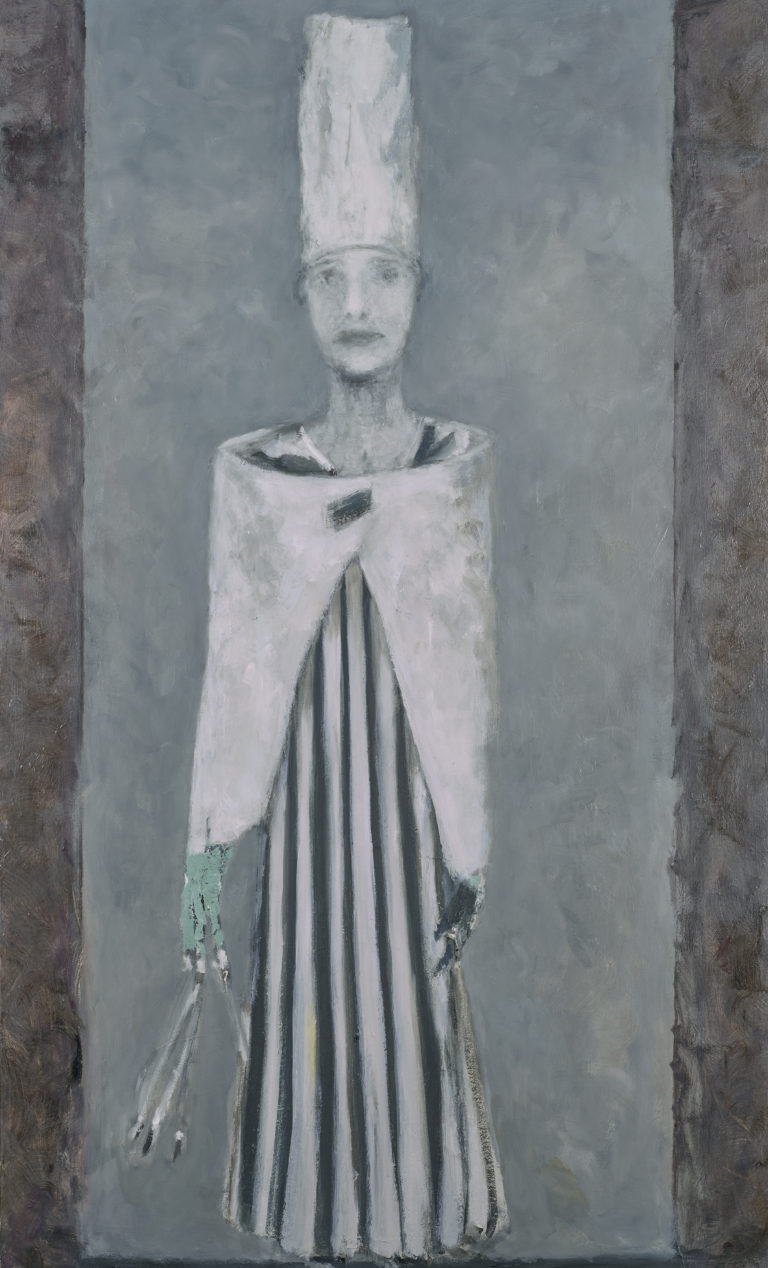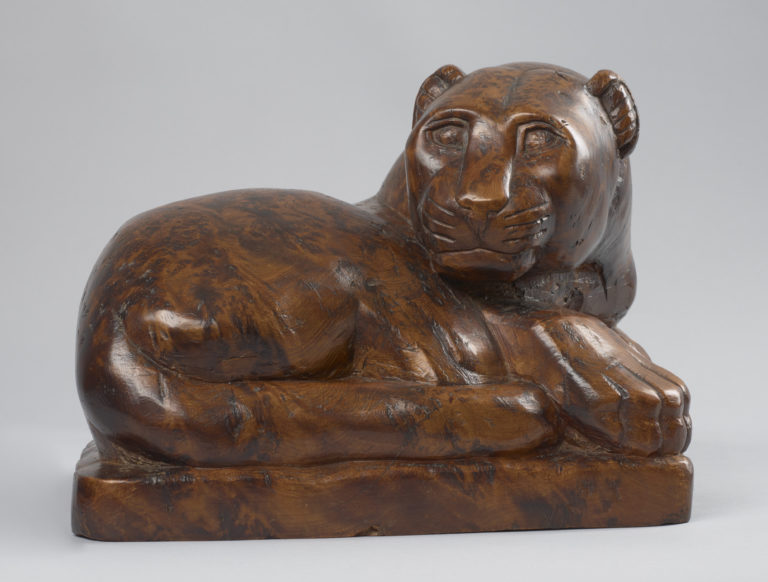Bibliography
Michel Thévoz, Louis Soutter. Catalogue de l’œuvre, Lausanne, L’Âge d’Homme, Zurich, Institut suisse pour l’étude de l’art, 1976: n. 2429.
Michel Thévoz, Louis Soutter ou l’écriture du désir, Lausanne, L’Âge d’Homme, Zurich, Institut suisse pour l’étude de l’art, 1974 : 230-231.
Giuseppe Fiocco, Carpaccio, Paris, Les Éditions G. Crès & Cie, 1931: pl. III / CLIII, CLV, CLVI, CLVII.




The 1930s saw Louis Soutter produce thirty or so drawings in dialogue with the classical repertoire, particularly the Italian schools of the thirteenth to sixteenth centuries. They are not so much traditional copies after the Old Masters as original works inspired by Soutter’s consumption of images distributed en masse in the illustrated press and specialist literature.
Soutter was interned in the Ballaigues asylum for the elderly in 1923. There, he had access to newspapers and magazines and was sent books by friends. His imagination fed on images reproduced in the L’Illustration literary supplement and art books. Here he reinterprets the angel musicians in the lower part of Vittore Carpaccio’s tempera on wood masterpiece, Presentation of Jesus in the Temple (1510, Venice, Gallerie dell’Accademia). The drawing was inspired by Giuseppe Fiocco’s book on Carpaccio, brought out in 1930 by the Rome-based publisher Valori Plastici. Soutter worked from the 1931 French translation.
Fiocco’s work featured black-and-white heliographic reproductions that softened outlines and heightened contrasts. It included four plates for the Presentation, one overall view and three details framing the three angels separately. Soutter grouped the three together, arranging them in a new order. Carpaccio’s typically Renaissance use of perspective, with the angels distanced from each other on two levels, becomes in Soutter’s work overlapping shapes in the foreground. The figures are stretched and twisted, losing their softness. Soutter’s condensed, displaced, deformed angels are eerily uncanny.